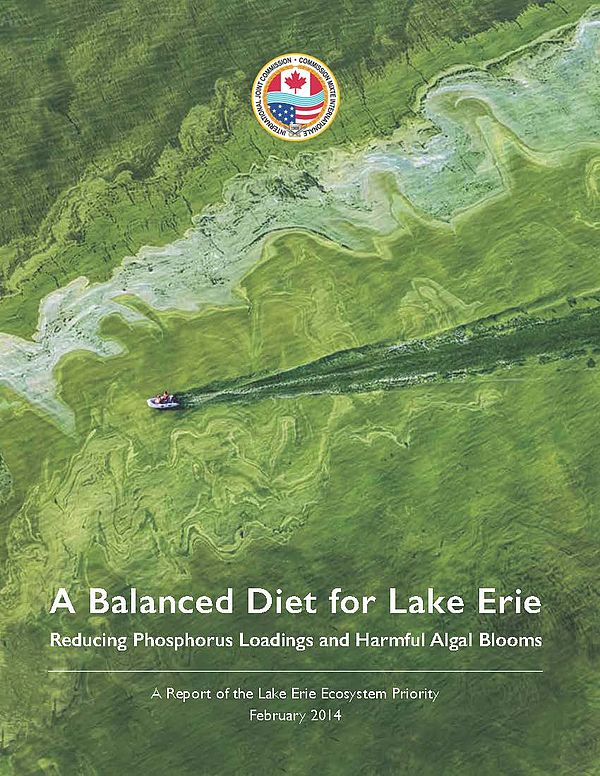Lake Champlain isn’t the only waterbody facing excessive phosphorus loading. In February, the International Joint Commission (IJC) released a report offering scientific and policy advice to governments as they implement plans to respond to deteriorating Lake Erie water quality. In 2011, Lake Erie experienced its largest algal bloom in history. In 2012, the IJC established the Lake Erie Ecosystem Priority (LEEP) in response to a growing challenge: lake-wide changes in Lake Erie related to problems of phosphorus enrichment from both rural and urban sources, compounded by the influence of climate change and aquatic invasive species. These changes have resulted in impaired water quality, with impacts on ecosystem health, drinking water supplies, fisheries, recreation and tourism, and property values. The report offers a series of steps to address phosphorus pollution, many of which will be familiar to long-time followers of water quality protection measures in the Champlain Basin. Click here to view the report.
Based on the research of dozens of scientists from both sides of the border, the IJC found that water quality has declined over the past decade, with impacts on ecosystem health, drinking water supplies, fisheries, recreation, tourism and property values. More than 400 people attended public meetings after a draft report was released in August 2013.
The IJC made 16 specific recommendations to assist governments in setting phosphorus reduction targets, reducing phosphorus loads from both agricultural and urban sources, and strengthening monitoring and research. They recommended setting numeric phosphorus loading targets focused on dissolved reactive phosphorus, and that Ohio and Michigan establish a Total Maximum Daily Load (TMDL ) for western Lake Erie. (A TMDL is a calculation of the maximum amount of a pollutant that a waterbody can receive and still meet water quality standards and an allocation of that load among the various sources of that pollutant.) Other recommendations included agricultural assistance programs to emphasize reduction of dissolved reactive phosphorus by improving the rate, timing, location and form of phosphorus applied to fields, and reducing runoff from those fields. They also called on New York and the other states that border Lake Erie to ban the application of manure, bio-solids and commercial fertilizer containing phosphorus on frozen ground or ground covered by snow. They urged accelerated use of “green infrastructure to treat urban stormwater, and a restriction on the sales of phosphorus lawn fertilizer by states that don't already have limits in place.
Much of what the IJC recommended has already been implemented on Lake Champlain. Both New York and Vermont have TMDLs, though Vermont’s is in the process of being rewritten. Both Vermont and New York regulate the use of phosphorus-based lawn fertilizer. Vermont bans the spreading of manure in winter, though New York has not taken this step. The one approach that is novel is targeting farm best-management practices to dissolved phosphorus rather than total phosphorus. Learn more here.
See more at: http://ijc.org/en_/leep/report#sthash.nDEMbmFo.dpuf
